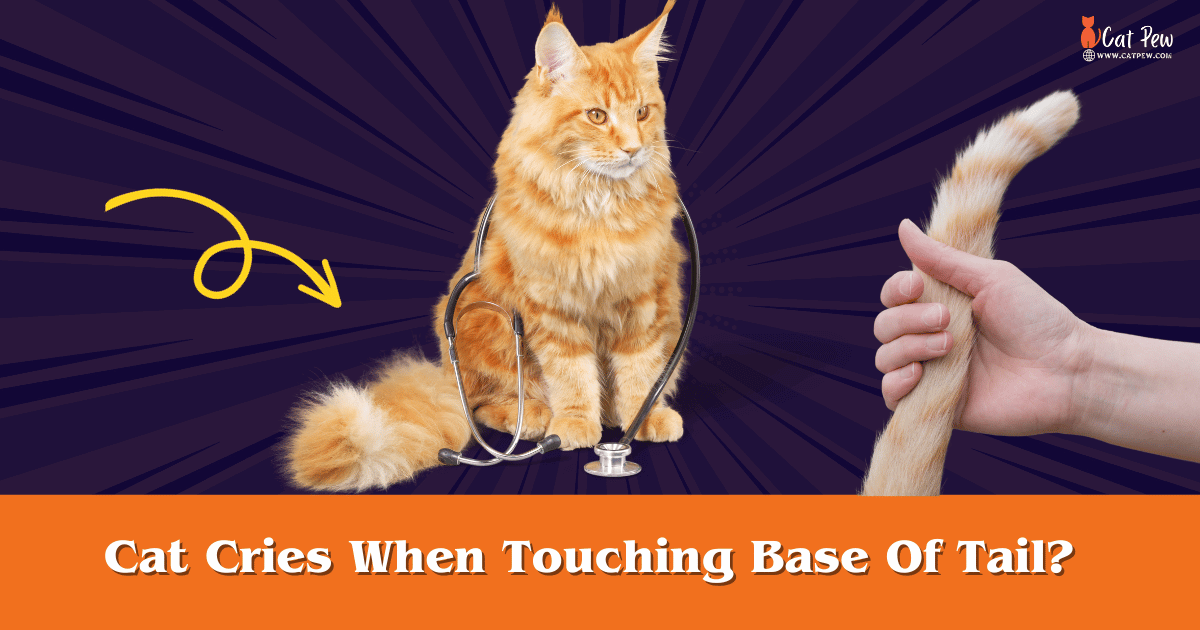Cat Cries When Touching Base Of Tail?
When a cat cries when touching the base of its tail, it often indicates pain or discomfort. This could result from various issues, such as an injury, infection, or inflammation.
If your cat cries when touching the base of its tail, it’s crucial to seek veterinary advice for proper diagnosis and treatment. Observing additional symptoms or behavioral changes can offer insights into the underlying cause. Taking swift action ensures the overall health and happiness of your feline friend.
During your visit to the veterinarian, they will conduct a thorough examination to pinpoint the cause of your cat’s discomfort. This may involve diagnostic tests, such as X-rays or blood work, to get a comprehensive understanding of the situation. Once the root cause is identified, your veterinarian will recommend an appropriate treatment plan.
Understanding The Behavior Of Cats
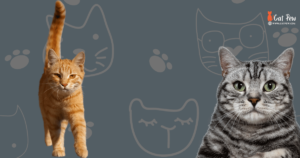
Understanding the behavior of cats can help owners interpret why their cat cries when touching the base of its tail. It might be a sign of discomfort or injury that needs attention and veterinary care.
Understanding the Behavior of Cats Cats are known for their unique behaviors and communication methods. As cat owners, we must realize these behaviors to provide our feline friends with the best care and support. One behavior that may puzzle cat owners is when their cats cry or show discomfort when the base of the tail is touched. This article will delve into the reasons behind this behavior and provide insights on how to address it.
Cats are known for their unique behaviors and communication methods. Cats are known to be mysterious creatures with their own set of behaviors and communication methods. Understanding these behaviors can help us establish a deeper connection with our feline friends. One such behavior that often perplexes cat owners is when their cats cry or show discomfort when the base of the tail is touched.
The Tail: A Key Communicator for Cats: their tail is more than just an appendage. It serves as an essential tool for communication and expression. Cats can convey a range of emotions through the positioning and movement of their tail. Their tail is a visual indicator of their current state, from happiness and contentment to fear and aggression. Possible Sensitivity and Pain When a cat cries or shows discomfort when the base of their tail is touched, it is possible that they are experiencing sensitivity or pain in that area. The base of the tail houses delicate nerve endings, and any inflammation or injury in this region can cause discomfort for the cat. It is important to note that cats may not cry or vocalize their pain like humans do. Instead, they may exhibit subtle signs such as flinching, twitching, or growling. Medical Reasons Several medical conditions could cause sensitivity or pain in the base of the tail for cats. These may include:
| Common Medical Conditions |
|---|
| Feline Hyperesthesia Syndrome |
| Anal sac impaction or infection |
| Injury or trauma to the tail |
| Arthritis or joint problems |
Addressing the Issue: If your cat shows discomfort or cries when the base of their tail is touched, it is crucial to consult a veterinarian. They can thoroughly examine and identify any underlying medical conditions causing the behavior. Depending on the diagnosis, treatment options may include medication, physical therapy, or changes in environmental factors to alleviate pain and discomfort. In conclusion, a cat crying or showing discomfort when the base of their tail is touched could indicate sensitivity or pain in that area. Understanding the behavior of cats and seeking veterinary guidance is essential to ensure the well-being and happiness of our feline companions.
The Tail As An Indicator Of A Cat’s Emotional State
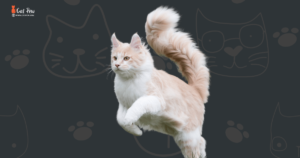
How a cat’s tail reacts when touched can indicate its emotional state. If a cat cries when its tail is touched at the base, it may feel discomfort or pain.
In the world of feline communication, the tail serves as a crucial tool for expressing a cat’s emotional state. Just like humans use body language and facial expressions to convey their feelings, cats rely on the position and movement of their tails to communicate their moods and intentions. Understanding the meaning behind these tail signals can help us better understand our furry friends and enhance our bond with them.
The Tail Serves As A Crucial Communication Tool For Cats
Cats are known for being mysterious creatures, but their tails can provide valuable insights into their emotional well-being. The tail extends a cat’s spine and comprises multiple vertebrae, muscles, and nerves. Unlike humans, who primarily use their voices to communicate, cats use non-verbal cues like tail movements to express themselves. When a cat feels content and relaxed, its tail is usually held upright with a slight curve at the tip. This position signifies a state of calmness and confidence. On the other hand, a lower tail position indicates that the cat is feeling anxious or insecure. You may notice the tail fluffed up in such instances, which is a defensive response aimed at making the cat appear larger and more intimidating.
Understanding Different Tail Positions And Movements
We must familiarize ourselves with different tail positions and movements to interpret a cat’s emotions correctly. Here are some standard tail signals and what they typically mean:
- 1. Vertical Tail: A cat holding its tail straight up generally indicates a positive emotional state. It is a sign of confidence, happiness, and eagerness to interact. A relaxed body posture often accompanies this tail position.
- 2. Tucked Tail: A tucked tail, where the tail is curled around the cat’s body or tucked tightly between its legs, is a clear indication of fear or submission. Cats adopt this position when they feel threatened or overwhelmed
- 3. Swishing Tail: A cat swishing its tail from side to side may signal agitation or annoyance. It can be a warning sign before the cat resorts to more aggressive behavior. Pay attention to other accompanying body language to understand the cause of the cat’s irritation.
- 4. Puffed-up Tail: A tail that appears puffed up, resembling a bottle brush, signifies fear or aggression. It is the cat’s instinctual response to appearing more significant and intimidating. It is best to give the cat space and avoid provoking further stress.
Remember, each cat is unique, and their tail signals may vary slightly. Please pay close attention to your cat’s specific behaviors and body language to better understand its emotional state. By observing and interpreting these tail movements, you can form a stronger bond with your feline companion and provide them with the appropriate care and support they need.
Common Reasons Why Cat Cries When Touching Base Of Tail?
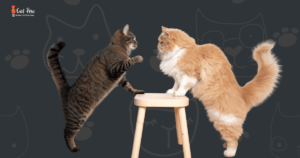
It can be distressing to witness your beloved feline friend cry out in pain or discomfort, especially when you touch the base of their tail. While cats are generally known to be agile and graceful, there are instances where they exhibit sensitivity in this specific area. Understanding the reasons behind their cries is crucial in providing them with the necessary care and attention. In this article, we dive into the most common causes of a cat’s distress when touching their tail’s base.
Uncovering The Underlying Causes Of A Cat’s Cries When The Base Of Their Tail Is Touched
When your feline companion displays signs of discomfort or vocalizes their distress when you touch the base of their tail, it signals the presence of potential underlying causes that need your attention. By uncovering these causes, you can address them and ensure your pet’s well-being. Let’s explore the possibilities:
Potential Medical Issues Or Sensitivities In This Area
For cats, the base of their tail is an essential anatomical site that houses various nerve endings and vital structures. Any medical issue or hypersensitivity in this region can lead to tenderness, pain, and cries when touched. Here are some possible medical conditions that might trigger your cat’s distress:
- Feline Hyperesthesia Syndrome (FHS): FHS is a disorder characterized by various symptoms, including heightened lower back and tail base sensitivity. Cats with this syndrome may react strongly to touch or even self-groom excessively in this area. If your cat exhibits these signs, consult a veterinarian for a proper diagnosis and treatment plan.
- Spinal or tail injuries: Cats are curious by nature and may occasionally get themselves into accidents resulting in spinal or tail injuries. Trauma to this area can cause pain and discomfort, making them cry out when touched. Seek veterinary assistance to assess the extent of the damage and provide appropriate care.
- Fleas or Parasites: Infestations can cause discomfort, and cats may react strongly when you touch the affected area. Regular flea prevention is key.
- Infection or Abscess: Infections or abscesses near the tail can be painful. Veterinary examination is crucial for diagnosis and appropriate treatment.
- Anal gland issues: Cats have anal glands located near the base of their tail. These glands can become impacted or infected, causing discomfort and pain. If your cat cries when you touch this area, it may be indicative of an issue with their anal glands. A veterinary examination can help identify and address such problems.
It is crucial to note that these are just a few potential medical issues or sensitivities that might be causing your cat’s distress when the base of their tail is touched. Each cat is unique, and a thorough evaluation by a veterinarian is necessary to ensure an accurate diagnosis and proper treatment.
How To Address A Cat’s Discomfort When Touching The Base Of Their Tail

As a cat owner, it can be pretty concerning when your feline companion cries out in distress whenever their tail base is touched. Cats are known for their sensitivity; if this happens, it is crucial to address their discomfort promptly. In this article, we will explore safe and gentle strategies to help alleviate a cat’s distress when touching the base of their tail and the importance of working in collaboration with a veterinarian to develop a personalized approach.
Safe And Gentle Strategies To Help Alleviate A Cat’s Distress
Understanding the specific triggers causing your cat’s discomfort is essential for effective resolution. Here are some safe and gentle strategies you can employ to help alleviate your cat’s distress:
- Schedule a veterinary examination: The first step in addressing your cat’s discomfort is to rule out any underlying medical issues. An analysis by a veterinarian will help identify potential causes, such as infections, injuries, or neurological problems.
- Observe your cat’s behavior: Pay close attention to your cat’s behavior and try to identify patterns or triggers that may be causing the distress. Does the discomfort occur only when the base of the tail is touched? Is it accompanied by changes in appetite or unusual toileting habits? Providing your veterinarian with detailed information will aid in diagnosing and developing an appropriate treatment plan.
- Implement desensitization techniques: Gradual desensitization can help your cat become more comfortable touching their tail base. Start by lightly touching the area near the base of the tail and reward your cat with treats or praise. Gradually increase the duration and intensity of touch as your cat becomes more at ease.
- Consider environmental adjustments: Creating a calm and safe environment for your cat can improve their well-being. Provide hiding spots, vertical spaces, and interactive toys to help reduce any stress or anxiety contributing to their discomfort.
- Explore holistic approaches: Some cat owners have succeeded with holistic remedies, such as herbal supplements or aromatherapy. However, it is essential to consult with your veterinarian before using any alternative treatments to ensure they are safe and appropriate for your cat’s specific situation.
Working With A Veterinarian To Develop A Personalized Approach
Collaboration with a veterinarian is crucial in developing a personalized approach to address your cat’s discomfort. They possess the expertise to diagnose underlying health conditions and can provide tailored guidance and treatments. Your veterinarian may recommend additional interventions, such as medication, behavior modification techniques, or referral to a veterinary specialist if necessary.
Remember, every cat is unique, and what works for one may not work for another. Patience, consistency, and compassion are essential when addressing your cat’s discomfort when touching the base of their tail. You can help your feline friend find relief and improve their quality of life with proper care and attention.
Creating A Comfortable Environment For Cats
Cats, beloved furry companions, often communicate through vocalizations and body language. One peculiar behavior is when a cat cries or responds uncomfortably when their tail is touched at the base. For cat owners, it’s crucial to understand their pets’ needs and create a stress-free living environment that promotes their comfort and well-being.
Designing A Stress-free Space For Cats To Feel At Ease
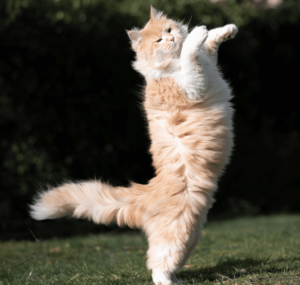
A stress-free environment can significantly impact a cat’s overall happiness and behavior. When designing a space for your feline friend, consider the following factors:
- Provide ample vertical space for cats to climb and perch. Cats naturally seek high vantage points, allowing them to observe their surroundings and feel safe.
- Create resting areas where they can enjoy uninterrupted relaxation. A cozy bed or cushioned spot away from noisy areas can give them a peaceful retreat.
- Provide hiding spots, such as cat caves or covered beds, where cats can retreat when they need to be alone or want to feel safe.
- Ensure the litter box is easily accessible and located in a quiet area. Cats are meticulous about hygiene and prefer a clean and private space for their bathroom needs.
- Use sturdy and scratch-resistant materials for furniture and surfaces, such as sisal rope or scratching posts. This allows cats to engage in their instinct to cross without causing damage to their belongings.
- Avoid loud noises and sudden disruptions that can startle or stress out your cat. Creating quiet zones can help them feel at ease and reduce anxiety.
Factors To Consider In Their Living Environment
When choosing the living environment for your cat, consider these aspects to ensure their overall well-being:
| Factor | Consideration |
|---|---|
| Diet and Nutrition: | Provide a balanced and appropriate diet to support their health and prevent potential dietary-related issues. |
| Stimulation and Play: | Offer interactive toys, scratching posts, or puzzle feeders to engage their minds and provide physical exercise. Playtime is essential for their mental and physical well-being. |
| Socialization: | Ensure they have social interaction opportunities with humans and other pets. Cats are social animals and benefit from positive human and animal relationships. |
| Grooming: | Regular grooming sessions can help maintain their coat’s health and cleanliness while also strengthening the bond between you and your cat. |
| Veterinary Care: | Schedule regular check-ups and vaccinations to ensure your cat’s health and identify any potential health issues early on. |
By considering these factors and designing a stress-free living environment, you can create a comfortable and harmonious space for your cat. This will promote their well-being and strengthen the bond between you and your feline companion.
Frequently Asked Questions On Cat Cries When Touching Base Of Tail
Why Does My Cat Meow When I Touch The Base Of His Tail?
Cats meow when you touch the base of their tail because it’s a sensitive area that can trigger a reaction.
Why Does The Base Of My Cat Tail Hurt?
The base of your cat’s tail may hurt due to various reasons, including injury, infection, or even a condition called “tail trauma”. It is important to take your cat to a veterinarian to determine the underlying cause and provide appropriate treatment.
Why does my cat cry when I touch the base of its tail?
Your cat may be experiencing pain or discomfort in that area.
Why Is The Base Of A Cat’s Tail Sensitive?
The base of a cat’s tail is sensitive because it contains many nerve endings. These nerves help cats with balance, communication, and hunting.
Why Does My Cat Get Mad When I Touch His Tail?
Cats can get mad when you touch their tail because it’s sensitive and can cause discomfort or pain. It’s their natural instinct to protect themselves.
What should I do if my cat cries when I touch the base of its tail?
Schedule a checkup with your veterinarian to rule out any potential health problems.
Why does my cat hiss when I touch his tail?
Cats may hiss when their tail is touched because it is a sensitive area and they feel threatened or in pain.
How can I prevent my cat from hissing when I touch its tail?
Approach your cat gently, avoid touching its tail directly, and monitor for signs of discomfort.
Should I be concerned if my cat hisses when I touch its tail?
It’s important to assess the situation and consult with a veterinarian if you have concerns about your cat’s behavior.
Is it normal for cats to react aggressively when their tail is touched?
Yes, cats may react aggressively if they feel their tail is being threatened or hurt.
Conclusion
If your cat cries when you touch the base of its tail, it could be a sign of injury or discomfort. It’s important to pay attention to your cat’s behavior and consult with a veterinarian to rule out any underlying health issues.
By addressing the problem promptly and providing the necessary care, you can ensure your cat’s well-being and happiness. Remember, a happy cat makes for a happy home!

Winston
I'm Winston, the author of this feline-focused (Catpew.com) blog . My love for cats goes back to my childhood, when I spent countless hours playing with my family's tabby, Mittens. This furry friend instilled in me a deep appreciation for the unique personalities, playful nature, and unconditional love that cats offer.

